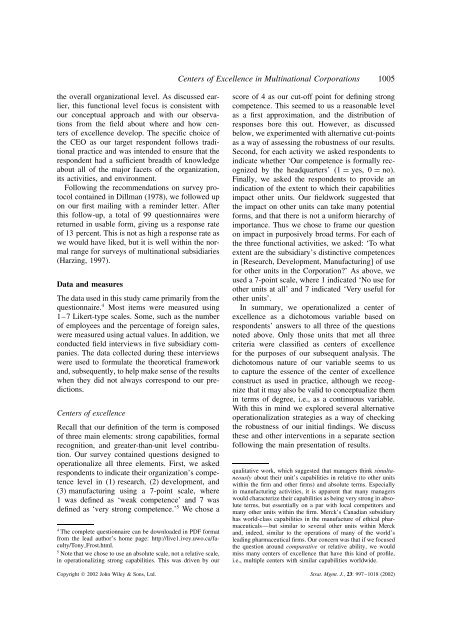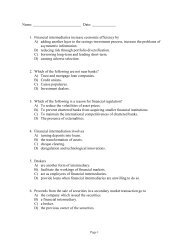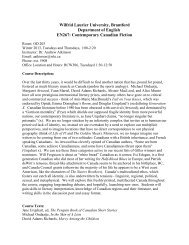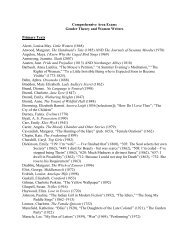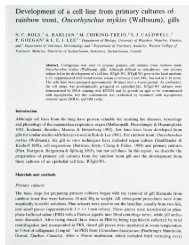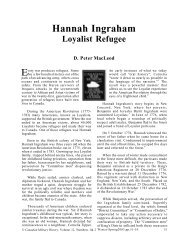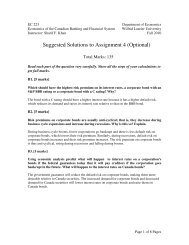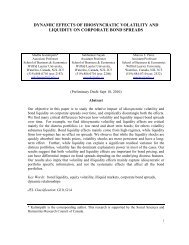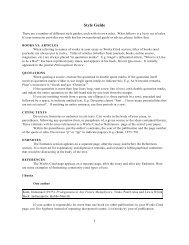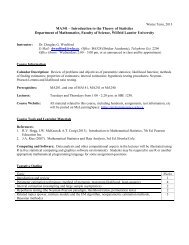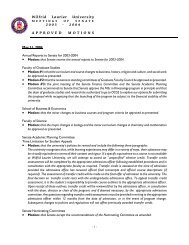CENTERS OF EXCELLENCE IN MULTINATIONAL CORPORATIONS
CENTERS OF EXCELLENCE IN MULTINATIONAL CORPORATIONS
CENTERS OF EXCELLENCE IN MULTINATIONAL CORPORATIONS
You also want an ePaper? Increase the reach of your titles
YUMPU automatically turns print PDFs into web optimized ePapers that Google loves.
Centers of Excellence in Multinational Corporations 1005the overall organizational level. As discussed earlier,this functional level focus is consistent withour conceptual approach and with our observationsfrom the field about where and how centersof excellence develop. The specific choice ofthe CEO as our target respondent follows traditionalpractice and was intended to ensure that therespondent had a sufficient breadth of knowledgeabout all of the major facets of the organization,its activities, and environment.Following the recommendations on survey protocolcontained in Dillman (1978), we followed upon our first mailing with a reminder letter. Afterthis follow-up, a total of 99 questionnaires werereturned in usable form, giving us a response rateof 13 percent. This is not as high a response rate aswe would have liked, but it is well within the normalrange for surveys of multinational subsidiaries(Harzing, 1997).Data and measuresThe data used in this study came primarily from thequestionnaire. 4 Most items were measured using1–7 Likert-type scales. Some, such as the numberof employees and the percentage of foreign sales,were measured using actual values. In addition, weconducted field interviews in five subsidiary companies.The data collected during these interviewswere used to formulate the theoretical frameworkand, subsequently, to help make sense of the resultswhen they did not always correspond to our predictions.Centers of excellenceRecall that our definition of the term is composedof three main elements: strong capabilities, formalrecognition, and greater-than-unit level contribution.Our survey contained questions designed tooperationalize all three elements. First, we askedrespondents to indicate their organization’s competencelevel in (1) research, (2) development, and(3) manufacturing using a 7-point scale, where1 was defined as ‘weak competence’ and 7 wasdefined as ‘very strong competence.’ 5 We chose a4 The complete questionnaire can be downloaded in PDF formatfrom the lead author’s home page: http://live1.ivey.uwo.ca/faculty/TonyFrost.html.5 Note that we chose to use an absolute scale, not a relative scale,in operationalizing strong capabilities. This was driven by ourscore of 4 as our cut-off point for defining strongcompetence. This seemed to us a reasonable levelas a first approximation, and the distribution ofresponses bore this out. However, as discussedbelow, we experimented with alternative cut-pointsas a way of assessing the robustness of our results.Second, for each activity we asked respondents toindicate whether ‘Our competence is formally recognizedby the headquarters’ (1 = yes, 0 = no).Finally, we asked the respondents to provide anindication of the extent to which their capabilitiesimpact other units. Our fieldwork suggested thatthe impact on other units can take many potentialforms, and that there is not a uniform hierarchy ofimportance. Thus we chose to frame our questionon impact in purposively broad terms. For each ofthe three functional activities, we asked: ‘To whatextent are the subsidiary’s distinctive competencesin [Research, Development, Manufacturing] of usefor other units in the Corporation?’ As above, weused a 7-point scale, where 1 indicated ‘No use forother units at all’ and 7 indicated ‘Very useful forother units’.In summary, we operationalized a center ofexcellence as a dichotomous variable based onrespondents’ answers to all three of the questionsnoted above. Only those units that met all threecriteria were classified as centers of excellencefor the purposes of our subsequent analysis. Thedichotomous nature of our variable seems to usto capture the essence of the center of excellenceconstruct as used in practice, although we recognizethat it may also be valid to conceptualize themin terms of degree, i.e., as a continuous variable.With this in mind we explored several alternativeoperationalization strategies as a way of checkingthe robustness of our initial findings. We discussthese and other interventions in a separate sectionfollowing the main presentation of results.qualitative work, which suggested that managers think simultaneouslyabout their unit’s capabilities in relative (to other unitswithin the firm and other firms) and absolute terms. Especiallyin manufacturing activities, it is apparent that many managerswould characterize their capabilities as being very strong in absoluteterms, but essentially on a par with local competitors andmany other units within the firm. Merck’s Canadian subsidiaryhas world-class capabilities in the manufacture of ethical pharmaceuticals—butsimilar to several other units within Merckand, indeed, similar to the operations of many of the world’sleading pharmaceutical firms. Our concern was that if we focusedthe question around comparative or relative ability, we wouldmiss many centers of excellence that have this kind of profile,i.e., multiple centers with similar capabilities worldwide.Copyright © 2002 John Wiley & Sons, Ltd. Strat. Mgmt. J., 23: 997–1018 (2002)


